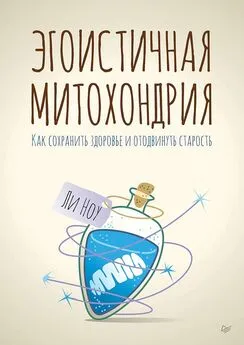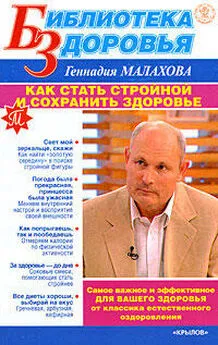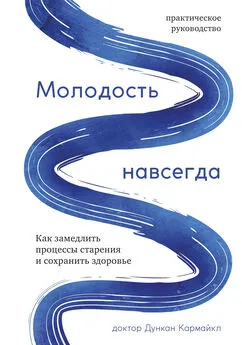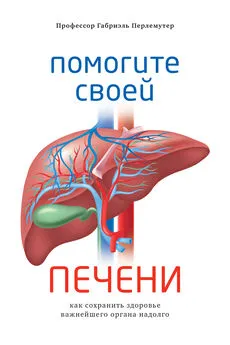Ли Ноу - Эгоистичная митохондрия. Как сохранить здоровье и отодвинуть старость
- Название:Эгоистичная митохондрия. Как сохранить здоровье и отодвинуть старость
- Автор:
- Жанр:
- Издательство:Питер
- Год:2020
- Город:Санкт-Петербург
- ISBN:978-5-4461-1021-6
- Рейтинг:
- Избранное:Добавить в избранное
-
Отзывы:
-
Ваша оценка:
Ли Ноу - Эгоистичная митохондрия. Как сохранить здоровье и отодвинуть старость краткое содержание
В нашем организме работают крошечные «энергетические станции» — митохондрии. Именно они отвечают за наше здоровье и отличное самочувствие. Когда они работают хорошо, мы не испытываем недостатка в энергии. А когда плохо — страдаем от заболеваний. Доктор Ли Ноу открывает тайну: заболевания, которые кажутся не связанными между собой на первый взгляд: диабет, рак, шизофрения, хроническая усталость, болезнь Паркинсона и другие — имеют общую природу.
Сегодня нам известно, как улучшить работу митохондрий, обеспечивающих организм энергией на 90 %. В этой книге вас ждет актуальная информация о питании, образе жизни, кетогенной диете и добавках, которые возвращают здоровье митохондриям, а следовательно, и нам.
Эгоистичная митохондрия. Как сохранить здоровье и отодвинуть старость - читать онлайн бесплатно ознакомительный отрывок
Интервал:
Закладка:
Maassen J. A., et al. Mitochondrial diabetes and its lessons for common type 2 diabetes. Biochem Soc Trans. 2006; 34:819–23.
Morino K., et al. Reduced mitochondrial density and increased IRS-1 serine phosphorylation in muscle of insulin-resistant offspring of type 2 diabetic parents. J Clin Invest. 2005 Dec 1; 115(12):3587–93. doi:10.1172/JCI25151. Patti M. E., et al. Coordinated reduction of genes of oxidative metabolism in humans with insulin resistance and diabetes: potential role of PGC1 and NRF1. Proc Natl Acad Sci U S A. 2003 Jul 8; 100(14):8466–71. Epub 2003 Jun 27. doi:10.1073/pnas.1032913100.
Petersen K. F., et al. Mitochondrial dysfunction in the elderly: possible role in insulin resistance. Science. 2003 May 16; 300(5622):1140–2. doi:10.1126/science.1082889.
Ritov V. B., et al. Deficiency of subsarcolemmal mitochondria in obesity and type 2 diabetes. Diabetes. 2005 Jan; 54(1):8–14. doi:10.2337/diabe-tes.54.1.8.
Rocha M., et al. Mitochondrial dysfunction and oxidative stress in insulin resistance. Curr Pharm Des. 2013; 19(32):5730–41. Epub Feb 20 2013.
Rocha M., et al. Perspectives and potential applications of mitochondria-targeted antioxidants in cardiometabolic diseases and type 2 diabetes. Med Res Rev. 2014 Jan; 34(1):160–89. Epub 2013 May 3. doi:10.1002/med.21285. Rovira-Llopis S., et al. Mitochondrial dynamics in type 2 diabetes: pathophysiological implications. Redox Biology. 2017 Apr; 11:637–45. doi:10.1016/j.redox.2017.01.013.
Ryu M. J. et al. Crif1 deficiency reduces adipose OXPHOS capacity and triggers inflammation and insulin resistance in mice. PLoS Genet. 2013 Mar; 9(3):e1003356. Epub 2013 Mar 14. doi:10.1371/journal.pgen.1003356. Schrauwen P., et al. Uncoupling protein 3 content is decreased in skeletal muscle of patients with type 2 diabetes. Diabetes. 2001 Dec 1; 50(12):2870– 3. doi:10.2337/diabetes.50.12.2870.
Schrauwen P., Hesselink M. K . Oxidative capacity, lipotoxicity, and mitochondrial damage in type 2 diabetes. Diabetes. 2004 Jun; 53(6):1412–7. doi:10.2337/diabetes.53.6.1412.
Short K. R., et al. Decline in skeletal muscle mitochondrial function with aging in humans. Proc Natl Acad Sci U S A. 2005 Apr 12; 102(15):5618–23. doi:10.1073/pnas.0501559102.
Suwa M., et al. Metformin increases the PGC-1alpha protein and oxidative enzyme activities possibly via AMPK phosphorylation in skeletal muscle in vivo. J Appl Physiol (1985). 2006 Dec; 101(6):1685–92. doi:10.1152/ japplphysiol.00255.2006.
Takahashi Y., et al. Hepatic failure and enhanced oxidative stress in mitochondrial diabetes. Endocr J. 2008 Jul; 55(3):509–14. doi:10.1507/ endocrj.K07E-091.
UK Prospective Diabetes Study Group. Intensive blood-glucose control with sulphonylureas or insulin compared with conventional treatment and risk of complications in patients with type 2 diabetes (UKPDS 33). Lancet. 1998 Sep 12; 352(9131):837–53. doi:10.1016/S0140-6736(98)07019-6.
Vanhorebeek I., et al. Tissue-specific glucose toxicity induces mitochondrial damage in a burn injury model of critical illness. Crit Care Med. 2009 Apr; 37(4):1355–64. doi:10.1097/CCM.0b013e31819cec17.
Vidal-Puig A. J., et al. Energy metabolism in uncoupling protein 3 gene knockout mice. J Biol Chem. 2000 May 26; 275(21):16258–66. doi:10.1074/ jbc.M910179199.
Wang X. et al . Protective effect of oleanolic acid against beta cell dysfunction and mitochondrial apoptosis: crucial role of ERK-NRF2 signaling pathway. J Biol Regul Homeost Agents. 2013 Jan — Mar; 27(1):55–67.
Weksler-Zangen S., et al. Dietary copper supplementation restores α-cell function of Cohen diabetic rats: a link between mitochondrial function and glucose stimulated insulin secretion. Am J Physiol Endocrinol Metab. 2013 May 15; 304(10):E1023–E1034. Epub 2013 Mar 19. doi:10.1152/ ajpendo.00036.2013.
Winder W. W., Hardie D. G. AMP-activated protein kinase, a metabolic master switch: possible roles in type 2 diabetes. Am J Physiol. 1999 Jul; 277(1 Pt 1):E1–E10.
Yan W., et al. Impaired mitochondrial biogenesis due to dysfunctional adiponectin AMPKPGC-1α signaling contributing to increased vulnerability in diabetic heart. Basic Res Cardiol. 2013 May;108(3):329. Epub 2013 Mar 5. doi:10.1007/s00395-013-0329-1.
Ye J. Mechanisms of insulin resistance in obesity. Front Med. 2013 Mar; 7(1):14–24. Epub 2013 Mar 9. doi:10.1007/s11684-013-0262-6.
Abdoli N., et al. Mechanisms of the statins’ cytotoxicity in freshly isolated rat hepatocytes. J Biochem Mol Toxicol. 2013 Jun; 27(6):287–94. Epub 2013 Apr 23. doi:10.1002/jbt.21485.
Anedda A., Rial E., González-Barroso M. M. Metformin induces oxidative stress in white adipocytes and raises uncoupling protein 2 levels. J Endocrinol. 2008 Oct; 199(1):33–40. Epub 2008 Aug 7. doi:10.1677/ JOE-08-0278.
Balijepalli S., Boyd M. R., Ravindranath V. Inhibition of mitochondrial complex I by haloperidol: the role of thiol oxidation. Neuropharmacology. 1999 Apr; 38(4):567–77. doi:10.1016/S0028-3908(98)00215-9.
Balijepalli S., et al. Protein thiol oxidation by haloperidol results in inhibition of mitochondrial complex I in brain regions: comparison with atypical antipsychotics. Neurochem Int. 2001, 38, 425–35. doi:10.1016/ S0197-0186(00)00108-X.
Beavis A. D. On the inhibition of the mitochondrial inner membrane anion uniporter by cationic amphiphiles and other drugs. J Biol Chem. 1989 Jan 25; 264:1508–15.
Belenky P., Camacho D., Collins J. J. Fungicidal drugs induce a common oxidative-damage cellular death pathway. Cell Rep. 2013 Feb 21; 3(2):350– 8. Epub 2013 Feb 14. doi:10.1016 /j.celrep.2012.12.021.
Berson A., et al. Steatohepatitis-inducing drugs cause mitochondrial dysfunction and lipid peroxidation in rat hepatocytes. Gastroenterology. 1998 Apr; 114(4):764–74. doi:10.1016 /S0016-5085(98)70590-6.
Brinkman K., et al. Mitochondrial toxicity induced by nucleoside-analogue reverse transcriptase inhibitors is a key factor in the pathogenesis of antiretroviral-therapy-related lipodystrophy. Lancet. 1999 Sep 25; 354(9184):1112–5. doi:10.1016/S0140-6736(99)06102-4.
Brinkman K., Kakuda T. N. Mitochondrial toxicity of nucleoside analogue reverse transcriptase inhibitors: a looming obstacle for long-term antiretroviral therapy? Curr Opin Infect Dis. 2000 Feb; 13(1):5–11.
Brown S. J., Desmond P. V. Hepatotoxicity of antimicrobial agents. Sem Liver Dis. 2002; 22(2): 157–67. doi:10.1055/s-2002-30103.
Carvalho F. S., et al. Doxorubicin-induced cardiotoxicity: from bioenergetic failure and cell death to cardiomyopathy. Med Res Rev. 2014 Jan; 34(1):106–35. Epub 2013 Mar 11. doi:10.1002 /med.21280.
Chan K., et al. Drug induced mitochondrial toxicity. Expert Opin Drug Metab Toxicol. 2005 Dec; 1(4):655–69. doi:10.1517/17425255.1.4.655.
Chen Y., et al. Antidiabetic drug metformin (GlucophageR) increases biogenesis of Alzheimer’s amyloid peptides via up-regulating BACE1 transcription. Proc Natl Acad Sci U S A. 2009 Mar 10; 106(10):3907–12. doi:10.1073/pnas.0807991106.
Chitturi S. M. D., George J. P. D. Hepatotoxicity of commonly used drugs: nonsteroidal antiinflam matory drugs, antihypertensives, antidiabetic agents, anticonvulsants, lipid lowering agents, psychotropic drugs. Semin Liver Dis. 2002; 22(2):169–83. doi:10.1055/s-2002-30102.
Chrysant S. G. New onset diabetes mellitus induced by statins: current evidence. Postgrad Med. 2017 May; 129(4):430–5. Epub 2017 Feb 24. do i:10.1080/00325481.2017.1292107.
Cullen J. M. Mechanistic classification of liver injury. Toxicol Pathol. 2005; 33(1):6–8. doi:10.1080 /01926230590522428.
Dong H., et al. Involvement of human cytochrome P450 2D6 in the bioactivation of acetaminophen. Drug Metab. Dispos. 2000 Dec; 28(12):1397–400. Dykens J. A., Will Y. The significance of mitochondrial toxicity testing in drug development. Drug Discov Today. 2007 Sep; 12(17–18):777–85. doi:10.1016/j.drudis.2007.07.013.
Ezoulin M. J., et al. Differential effect of PMS777, a new type of acetylcholinesterase inhibitor, and galanthamine on oxidative injury induced in human neuroblastoma SK-N-SH cells. Neurosci Lett. 2005 Dec 2; 389(2):61–5. doi:10.1016/j.neulet.2005.07.026.
Fromenty B., Pessayre D. Impaired mitochondrial function in microvesicular steatosis effects of drugs, ethanol, hormones and cytokines. J Hepatol. 1997; 26 Suppl 2:43–53. doi:10.1016 /S0168-8278(97)80496-5.
Gambelli S., et al. Mitochondrial alterations in muscle biopsies of patients on statin therapy. J. Submicrosc Cytol Pathol. 2004; 36(1):85–9.
Gvozdjakova A., et al. Coenzyme Q10 supplementation reduces corticosteroids dosage in patients with bronchial asthma. Biofactors. 2005; 25(1–4):235–40. doi:10.1002/biof.5520250129.
Han D., et al. Regulation of drug-induced liver injury by signal transduction pathways: critical role of mitochondria. Trends Pharmacol Sci. 2013 Apr; 34(4):243–53. Epub 2013 Feb 27. doi:10.1016/j.tips.2013.01.009.
Jaeschke H., Bajt M. L. Intracellular signaling mechanisms of acetaminophen-induced liver cell death. Toxicol Sci. 2006 Jan; 89(1):31–41. doi:10.1093/toxsci/kfi336.
Kalghatgi S., et al. Bactericidal antibiotics induce mitochondrial dysfunction and oxidative damage in mammalian cells. Sci Transl Med. 2013 Jul 3; 5(192):192ra85. doi:10.1126 /scitranslmed.3006055.
Lambert P., et al. Chronic lithium treatment decreases neuronal activity in the nucleus accumbens and cingulate cortex of the rat. Neuropsychopharmacology. 1999; 21:229–37. doi:10.1016/S0893-133X(98)00117-1.
Lee W. M. Acetaminophen and the US acute liver failure study group: lowering the risks of hepatic failure. Hepatology. 2004 Jul; 40(1):6–9. doi:10.1002/hep.20293.
Levy H. B., Kohlhaas H. K. Considerations for supplementing with coenzyme Q10 during statin therapy. Ann Pharmacother. 2006 Feb; 40(2):290– 4. doi:10.1345/aph.1G409.
Mansouri A., et al. Tacrine inhibits topoisomerases and DNA synthesis to cause mitochondrial DNA depletion and apoptosis in mouse liver. Hepatology. 2003 Sep; 38(3):715–25. doi:10.1053/jhep.2003.50353.
Masubuchi Y., Suda C., Horie T. Involvement of mitochondrial permeability transition in acetaminophen-induced liver injury in mice. J Hepatol. 2005 Jan; 42(1):110–6. doi:10.1016 /j.jhep.2004.09.015.
Maurer I., Moller H. J. Inhibition of complex I by neuroleptics in normal human brain cortex parallels the extrapyramidal toxicity of neuroleptics. Mol Cell Biochem. 1997 Sep; 174(1–2):255–9.
Mikus C. R., et al. Simvastatin impairs exercise training adaptations. J Am Coll Cardiol. 2013 Aug 20; 62(8):709–14. Epub 2013 Apr 10. doi:10.1016/j. jacc.2013.02.074.
Modica-Napolitano J. S., et al. Differential effects of typical and atypical neuroleptics on mitochondrial function in vitro. Arch Pharm Res. 2003 Nov; 26(11):951–9.
Mohamed T. M., Ghaffar H. M., El Husseiny R. M. Effects of tramadol, clonazepam, and their combination on brain mitochondrial complexes. Toxicol Ind Health. 2015 Dec; 31(12): 1325–33. Epub 2013 Jul 10. doi:10.1177/0748233713491814.
Musavi S., Kakkar P. Diazepam induced early oxidative changes at the subcellular level in rat brain. Mol Cell Biochem. 1998 Jan; 178(1–2):41–6.
Читать дальшеИнтервал:
Закладка:










